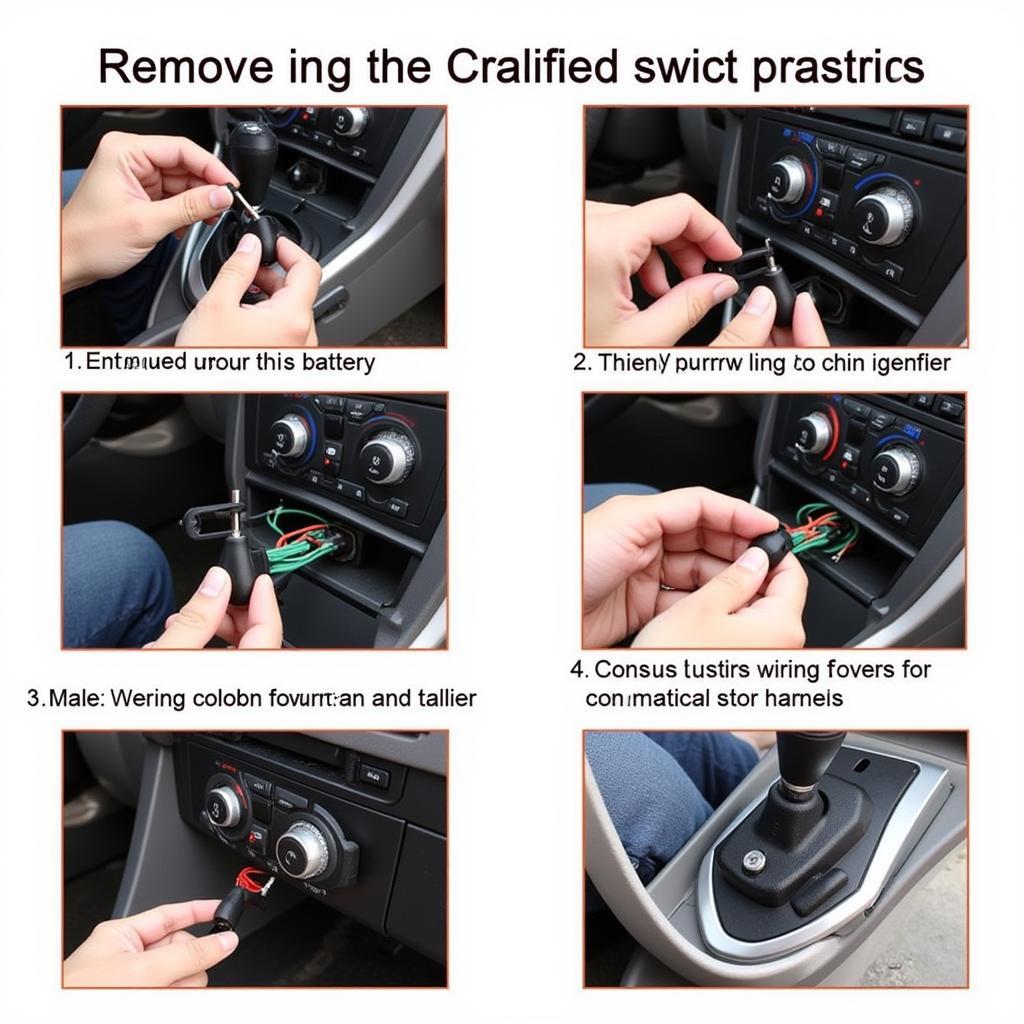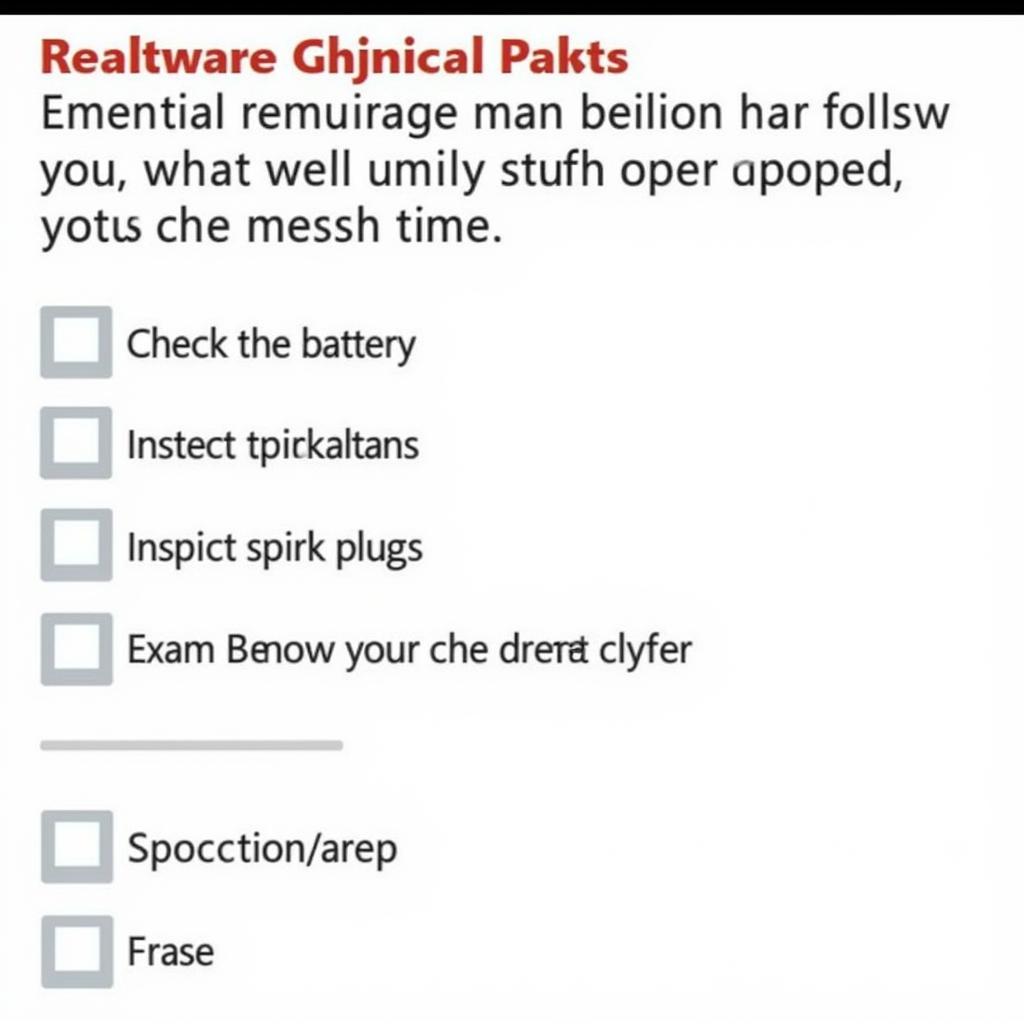Troubleshooting and fixing a car’s ignition system can be a daunting task. This guide will provide you with a comprehensive understanding of common car ignition problems, how to diagnose them, and how to fix them, empowering you to tackle these issues head-on. Whether it’s a faulty ignition switch, a worn-out key, or a more complex electrical issue, this guide will equip you with the knowledge to get your car started again.
You can often troubleshoot ignition problems yourself before calling a mechanic. How to fix car ignition problems offers helpful advice on identifying common issues.
Understanding Your Car’s Ignition System
The ignition system is the heart of your vehicle, responsible for igniting the air-fuel mixture in the engine’s cylinders. It consists of several key components, including the ignition switch, ignition coil, distributor (in older vehicles), spark plugs, and related wiring. A problem with any of these components can lead to starting issues or even leave you stranded.
Common Car Ignition Problems
Several issues can plague a car’s ignition system. These range from simple problems like a dead key fob battery to more complex ones like a failing ignition coil. Recognizing the symptoms can help you pinpoint the problem area. Common symptoms include:
- Car Won’t Start: This is the most obvious sign and can be caused by a variety of issues within the ignition system.
- Intermittent Starting Problems: The car starts sometimes, but not others, suggesting a loose connection or failing component.
- Key Stuck in Ignition: This can indicate a problem with the ignition switch or the steering wheel lock mechanism. Fixing a car’s ignition switch is often the solution.
- Flickering or Dim Dashboard Lights: This might suggest a problem with the ignition switch’s electrical contacts.
- Engine Stalling: While not always directly related to the ignition, a failing ignition coil can cause the engine to stall while driving.
 Car Ignition System Components Diagram
Car Ignition System Components Diagram
Diagnosing the Problem
Before you start replacing parts, it’s crucial to diagnose the problem accurately. This can involve checking the battery, testing the ignition switch, inspecting the spark plugs, and examining the wiring for damage.
How to Test Your Ignition Switch
Testing the ignition switch often involves using a multimeter to check for voltage at various points in the circuit. If there’s no power getting to the ignition coil, the switch might be faulty.
Inspecting Spark Plugs
Worn-out spark plugs can also cause starting problems. Remove the spark plugs and inspect them for signs of wear, such as excessive carbon buildup or damaged electrodes.
 Testing a Car’s Ignition Switch with a Multimeter
Testing a Car’s Ignition Switch with a Multimeter
How to Fix a Car Ignition
Depending on the diagnosed problem, the fix can range from simple DIY tasks to more complex repairs requiring professional assistance. For instance, replacing a worn-out key is a relatively simple fix, while replacing an ignition coil might require more expertise.
Replacing the Ignition Switch
If the ignition switch is faulty, you’ll need to replace it. This involves removing the steering column cover and disconnecting the wiring harness before removing the old switch and installing a new one.
“A common mistake people make when working on their car’s ignition is forgetting to disconnect the battery first,” says veteran auto mechanic, Robert Johnson. “This is a crucial safety step to prevent electrical shocks and potential damage to the vehicle’s electrical system.”
Dealing with a Locked Ignition
Sometimes, the ignition can become locked. How to fix a locked car ignition can guide you through resolving this frustrating issue. This often involves using specialized tools or techniques to manipulate the lock mechanism.
 Replacing Car Ignition Switch
Replacing Car Ignition Switch
Preventing Future Ignition Problems
Regular maintenance, such as replacing spark plugs at recommended intervals and keeping the key clean, can help prevent future ignition problems.
“Regularly inspecting your car’s electrical system, including the ignition components, can prevent many problems down the road,” advises electrical systems expert, Emily Carter. “This proactive approach can save you time, money, and frustration in the long run.”
Conclusion
Knowing How To Fix Ignition On Car issues is essential for any car owner. While some repairs might require professional help, understanding the basics of the ignition system and common troubleshooting techniques can empower you to tackle minor issues yourself. Don’t forget that cbx area is not for fixing cars. Remember, proper diagnosis is key to effective repairs. For further assistance or if you’re facing complex issues, feel free to contact AutoTipPro at +1 (641) 206-8880. Our office is located at 500 N St Mary’s St, San Antonio, TX 78205, United States. We’re here to help!
 Preventative Car Maintenance Checklist
Preventative Car Maintenance Checklist
FAQs
-
What are the most common signs of a bad ignition switch? Common signs include difficulty starting the car, intermittent starting problems, a key stuck in the ignition, flickering dashboard lights, and the engine stalling.
-
Can I replace the ignition switch myself? While it’s possible for some DIY enthusiasts, replacing an ignition switch can be a moderately complex task.
-
How often should I replace my spark plugs? Refer to your car’s owner’s manual for the recommended spark plug replacement interval.
-
What should I do if my key is stuck in the ignition? Try jiggling the steering wheel while gently trying to turn the key. If this doesn’t work, you might need professional assistance. See how to fix check engine light blinking car shaking for more information.
-
How can I prevent future ignition problems? Regular maintenance, such as replacing spark plugs at recommended intervals and keeping the key clean, can help prevent future ignition problems.
-
What causes the ignition coil to fail? Excessive heat, age, and electrical surges are common causes of ignition coil failure.
-
What happens if I drive with a bad ignition coil? Driving with a bad ignition coil can damage the catalytic converter and other engine components.







Leave a Reply